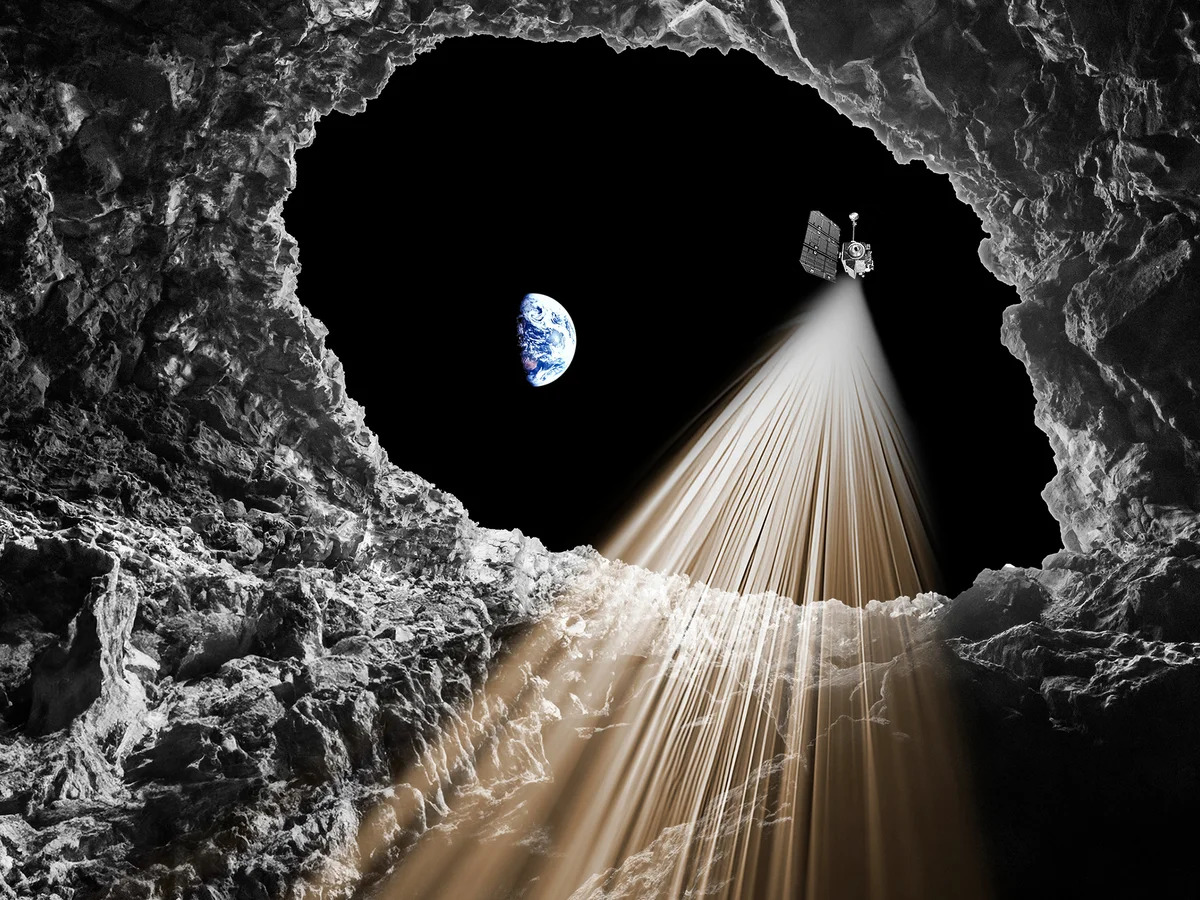A newly discovered moon cave, the size of 14 tennis courts, could shelter future astronauts.
Key Takeaways:
- Scientists have found a large underground cave on the moon that could serve as a future lunar base.
- The cave, accessible through a pit in Mare Tranquillitatis, offers natural protection from space hazards.
- Measuring 45 meters wide and 80 meters long, the cave likely formed as an ancient lava tube.
- Its stable temperature and potential water ice make it a prime location for long-term lunar missions.
- Future challenges include ensuring safe access, structural stability, and monitoring for seismic activity.
____________
Scientists have discovered a vast underground cave on the moon that could provide a natural shelter for future astronauts. Located in Mare Tranquillitatis—the site of the Apollo 11 landing—the cave is accessible through a pit and is believed to be an ancient lava tube. The findings, published in Nature Astronomy, were made using radar data from NASA’s Lunar Reconnaissance Orbiter (LRO).
A Natural Lunar Shelter
The pit, the deepest known on the moon, is approximately 100 meters wide and leads to a sloping floor and an underground cave measuring 45 meters wide and up to 80 meters long. Situated about 150 meters beneath the surface, this cave is thought to be an empty lava tube formed by ancient volcanic activity. Scientists believe such caves could serve as ideal habitats for lunar explorers, offering natural protection from extreme temperatures, harmful radiation, and micrometeorites.
The cave’s relatively stable environment is crucial for long-term lunar missions. Unlike the moon’s surface, where temperatures swing dramatically between day and night, the underground location could provide a more consistent climate. Additionally, researchers suggest that these caves may contain water ice, a key resource for future space missions.

Challenges and Future Prospects
Despite its potential, accessing the cave poses significant challenges. The pit’s steep walls and loose debris make it difficult to descend the 125-meter drop to the floor without causing avalanches. Researchers are exploring ways to assess the cave’s structural stability and reinforce its walls and ceilings. Future lunar bases may require monitoring systems to detect movement or seismic activity and create emergency zones in case of collapses.
Over 200 similar pits have been discovered on the moon, many of which could lead to more lava tubes beneath the surface. If confirmed, these structures could revolutionize lunar exploration, providing ready-made shelters without the need for extensive construction. As space agencies prepare for future moon missions, understanding and utilizing these underground caves could be a major step toward long-term human presence on the lunar surface.




